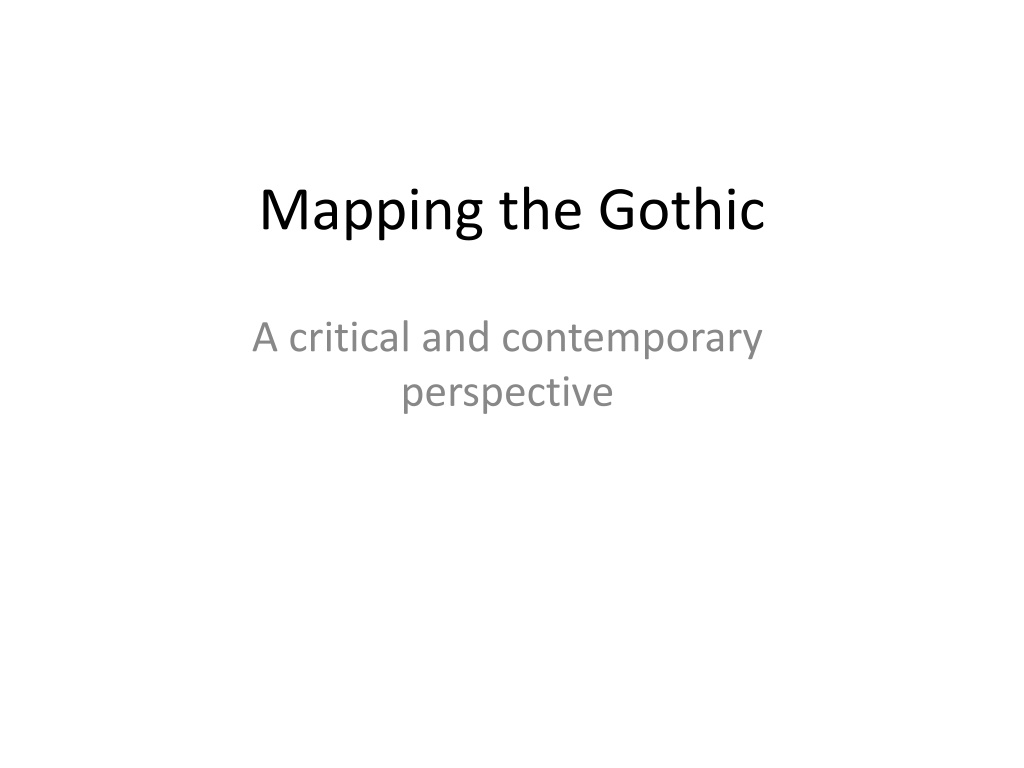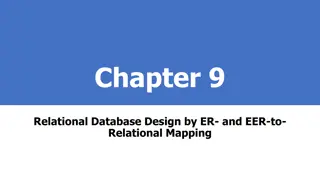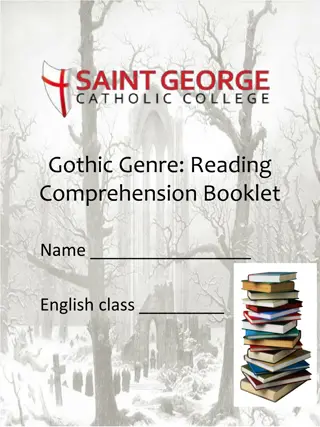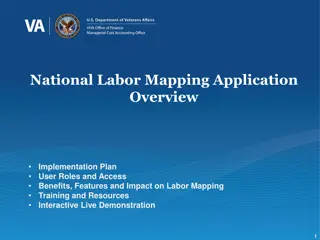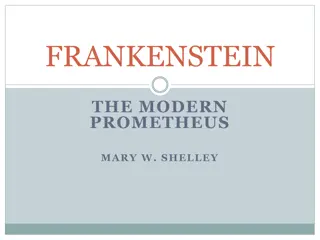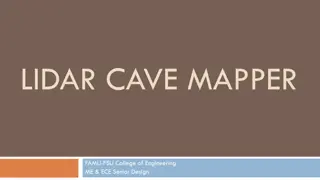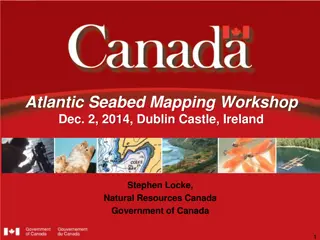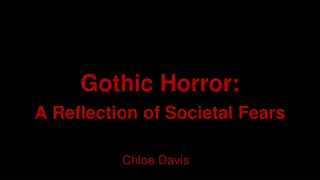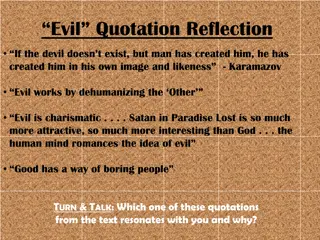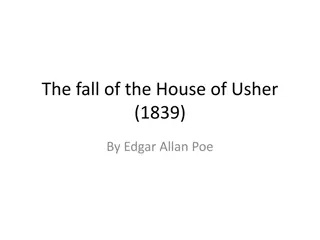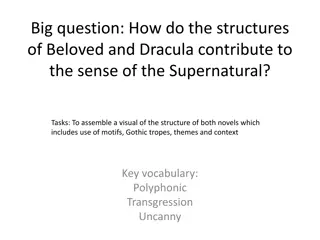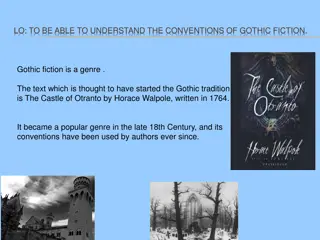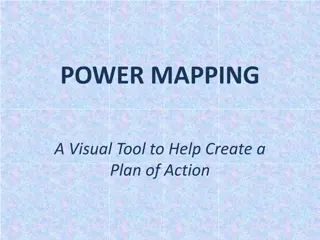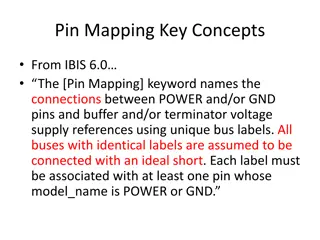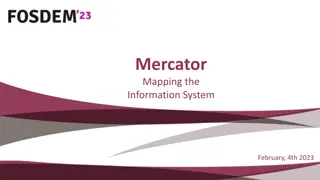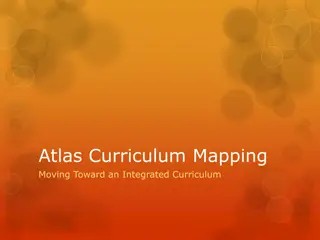Mapping the Gothic: A Critical and Contemporary Perspective
The content delves into the critical analysis of the Gothic genre from both historical and modern viewpoints. It explores themes such as terror, repression, border-crossing, and the powers of imagination. Further sections discuss contemporary Gothic literature, character creation, and recommended readings by prominent authors. The visual aids enhance the understanding of key concepts discussed in the text.
Download Presentation

Please find below an Image/Link to download the presentation.
The content on the website is provided AS IS for your information and personal use only. It may not be sold, licensed, or shared on other websites without obtaining consent from the author. Download presentation by click this link. If you encounter any issues during the download, it is possible that the publisher has removed the file from their server.
E N D
Presentation Transcript
Mapping the Gothic A critical and contemporary perspective
1. The Gothic: Critical ID card Terror to evoke pity and terror (Radcliffe) the sublime (Burke) vs. horror Split selves Repression (Freud) Scapegoating (Girard) Ab-jection (Kristeva) 2
1. The Gothic: Critical ID card Border-crossing disrupting binary power structures the dark continent Is there a male / female gothic? liminality Gothic politics revolutionary or reactionary? class anxieties How subversive is the genre? 3
1. The Gothic: Critical ID card A meta-fictional genre powers / dangers of the imagination the unrepresentable 4
2. Contemporary Gothic Monstrous texts, monstrous postmodernity Historical / theoretical continuations we live in Gothic times (Carter): contemporary terror serialized reality: the reel and the real Literary continuations anxiety of influence (Bloom) How to be post-? Reviewing our attitude to the past Contemporary specificities the alien within self-conscious, self-parodic the hyperreal 5
3. A Gothic art of fiction Characters Setting Time Narrative Atmosphere Moral stance Genre Style Tone Reader 6
4. Further reading Baudrillard, Jean. Simulacres et Simulation (1981). Beville, Maria. Gothic-Postmodernism: Voicing the Terrors of Postmodernity (2009). Bloom, Harold. The Anxiety of Influence (1973). Burke, Edmund. A Philosophical Enquiry into the Origin of Our Ideas of the Sublime and Beautiful (1757). Carter, Angela. The Sadeian Woman and the Ideology of Pornography (1979). Debord, Guy. La Soci t du Spectacle (1967). Freud, Sigmund. Das Unheimliche (1919). Girard, Ren . La Violence et le Sacr (1972). Le Bouc Emissaire (1982). Hogle, Jerrold E. The Cambridge Companion to Gothic Fiction (2002). Horner, Avril and Zlosnik, Sue. Gothic and the Comic Turn (2004). Kristeva, Julia. Powers of Horror: An Essay on Abjection (1980). McHale, Brian. Postmodernist Fiction (1987). Punter, David. A Companion to the Gothic (2000). 7
